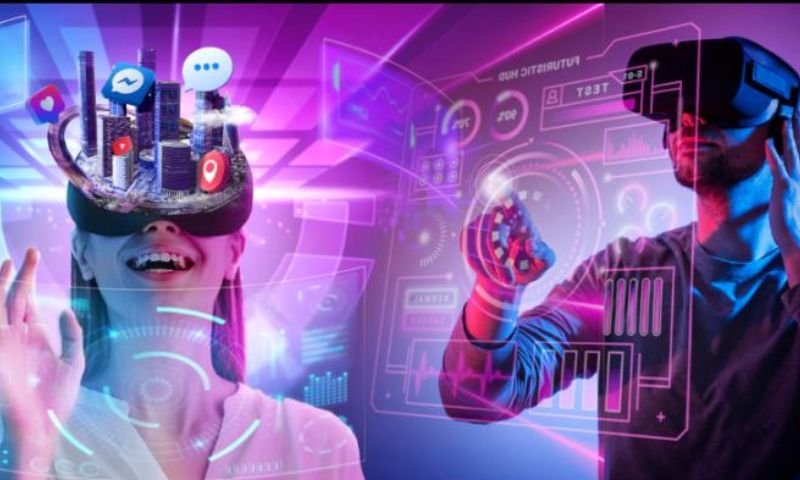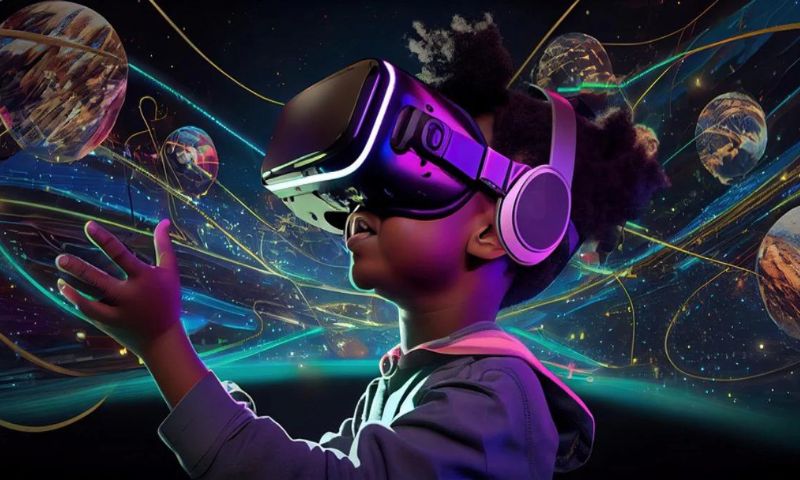Ready to dive deep into the world of decentralized learning with blockchain tech? You’ll find challenges of using decentralized learning platforms with blockchain right here. We’ll crack the code on how to handle tough issues like glitchy speed and sky-high costs. Plus, I’m dishing out tips for keeping things safe and easy for everyone. Stick with me—we’ve got lots to unpack!
Understanding the Core Challenges of Blockchain in Education
Addressing Scalability and Latency on Decentralized Platforms
In the world of blockchain and education, we face big challenges. One tough nut to crack is making these systems big enough for lots of users (this is what we call “scalability”) without making them slower (this is the “latency” issue). Imagine you have a photo that everyone wants a copy of, but you can only send it to one friend at a time. This can take forever when you’ve got a lot of friends! In blockchain, it’s like if the network is clogged; the data (like grades or lessons) doesn’t move as fast as we want it to. Even though blockchain is great for keeping records safe, we must work hard to keep it fast and ready for more and more people to use.
We’re seeing more people joining decentralized learning platforms every day. To keep up, developers are trying to find new ways to scale up. Think of it like adding more lanes to a highway to let more cars through. Sometimes, though, this can make things more complex. And let’s not forget that making mistakes can be costly, because fixing tech troubles in blockchain isn’t as easy as hitting an “undo” button. It’s like a puzzle where you have to find the best fit for all the pieces, and it can give even the smartest of us a headache!
Navigating Interoperability and Integration Hurdles
Now let’s talk about playing nice together. “Interoperability” is a big word that means different blockchain systems talking to each other smoothly. For schools and learning platforms, this is a must. If we have different systems that don’t speak the same language, teachers and students can get frustrated. Think of it as going on a class trip but everyone’s GPS gives them different directions. Not fun, right?
To fix this, we make sure that all the tech pieces can connect without trouble. But let me tell you, it’s like trying to get cats to march in a parade – tricky, but not impossible. Some smart folks are working on making this easier with things called “smart contracts,” which are like robot helpers that enforce rules without needing a grown-up to watch over them.
In terms of bringing new tech into schools, we bump into some walls. Some schools are all in, ready to dive into blockchain, while others are a bit shy, wondering how much it will cost and if it’s worth it. We also have to think about the rules that keep our online spaces safe for kids. With blockchain, we’ve got to make sure that the tech plays by the rules too. This way everyone can learn without worries.
So, as we march ahead with this new tech in schools, remember it’s not always a walk in the park. But hey, anything worth doing doesn’t come easy, right? We learn as we go, making sure our digital backpacks are packed with the right tools for the journey.
Tackling Economic and Environmental Concerns
Exploring the Cost Barriers and ROI of Blockchain Adoption
Dig into your wallets, folks—blockchain isn’t free. Schools want to use blockchain for their good. But the costs can be a show stopper. We need to buy the tech and teach people to use it. That all adds up to a big bill.
Those new to blockchain ask: “Will it pay off?” We look at the return of investment, or ROI. For success, the benefits must be more than the costs. The tech makes sharing records safe and smooth. But we must think, “Is the cost worth it?”
Assessing Energy Consumption and Promoting Sustainability
Blockchains need power—lots of it. They are like a beast that never sleeps, always munching on energy. For keeping our Earth clean, we must check how much energy they use.
Blockchain makes teaching and learning open to all. Yet, its hunger for power raises brows. Think of a big room filled with computers—lots of them. They’re working on math non-stop. That’s blockchain, but it must turn green.
Can blockchains save power? New ideas show they can. We should use these to make things better. Using less energy is key for our planet’s health. And there are ways to make blockchain need less juice. This is good for all of us and our Earth.
Mighty blockchains have much to offer in learning. They keep info safe and can’t be messed with. But using them wisely matters a lot. Costs need watching, and our Earth must come first. We can’t ignore the dollar signs or our planet’s cries for help. Teach and learn, yes—but let’s be smart about it.
Prioritizing Security and User Experience in Decentralized Learning
Enhancing Privacy and Data Protection for Users
When we dive into the world of blockchain-based learning, we hit a big concern: privacy. How do we keep our details safe? Blockchain helps here! It stores our info in a way that’s hard to change. Even so, we must stay alert. Bad players always look for weak spots.
Let’s talk about keeping things locked tight on these platforms. We use tech that checks who is who. This way, only the right folks get access to what they need. The goal is to keep your personal stuff just that – personal – while you learn in this new space.
But it’s not a walk in the park. I know the trails are rough. We tackle software bugs that might leak info. We’re always chasing updates to fill in these holes. It’s a bit like a digital game of whack-a-mole. And when it comes to rules set by bosses from up high? Well, we must always play by the book, sticking to laws that keep your data safe.
Optimizing the User Experience with Intuitive Blockchain Tools
Now, let’s chat about the user side of things – how you folks feel and deal with these tools. Good design is key. We want platforms that are a breeze to use. Think about a bike. You want to hop on and just start pedaling. It’s the same idea here. We’re crafting the learning bike of the future!
These tools, they’ve got to be smart. But easy to grasp, too. We’re all about cutting down on the clicks and confusion. After all, who wants headaches when you’re trying to learn? No one.
Take my word for it: it’s a tricky balance. We need to make sure that even as we buff up security, we keep everything user-friendly. We aim to craft spaces where learning flows without tech woes.
Students and teachers should feel right at home with these tools. They shouldn’t have to be tech wizards to use the platform. We’re all about guiding them through each step. From joining in to sharing their brilliant ideas, we make it smooth.
And the best part? As we keep honing these tools, things will only get better. But we can’t kick back and relax. We’re on this. Pushing to iron out each and every wrinkle on this new educational outfit.
In summary, while sailing through the waves of decentralization, we’re keeping a firm hand on the wheel when it comes to your security and comfort. The voyage has its storms, but together, we’re mapping out a course to calmer waters where learning is safe, personal, and just plain nice to use.
Streamlining Adoption and Compliance in Educational Blockchain
Simplifying the Onboarding Process for Educators and Learners
Making things easy for teachers and learners is key. First, we should ask: What issues do folks face when they first use blockchain for learning? The answer is simple: tech seems complex, sign-up is tough, and learning new systems can confuse. Now let’s crack these nuts.
First up, tech complexity. Thinking about blockchain can make heads spin. We need to break it down, make it less scary. Imagine unpacking a big, tricky Lego set. With clear steps, bit by bit, it gets easy. That’s what we aim for in blockchain onboarding.
Next, the tough sign-up. It shouldn’t be hard to jump in. Remember signing up for an email account? Easy, right? That’s our benchmark. We want joining a blockchain platform to be a breeze.
Last, that dizzy feeling when learning new tech. We tackle it with solid support and hands-on guides. They are like helpful friends, always there to explain stuff. Like learning to ride a bike, once you get it, it’s a joy.
Adhering to Regulatory Standards and Smart Contract Integration
Rules and laws keep us safe, even in education. With blockchain, we follow them just as closely. How do we ensure we stick to education laws with blockchain? It’s all about following the rules and using tech that helps us do just that.
Smart contracts sound fancy, but they’re just like pinky promises we can’t break. They make sure we do what we say we’ll do. When a student does the work, the smart contract ticks and says “Yep, they did it!”
When we mix rules with smart contracts, we get a classroom that’s fair and square. It’s like having a teacher who never forgets what students are owed. And no one gets to sneak out of doing homework.
Now, I hear you ask: What are the tough parts with these smart contracts? Sometimes the law changes, and our tech needs to play catch-up. Think of it like updating your phone, new stuff has to fit the old.
In all this, we focus on making it smooth for everyone. We don’t want teachers scratching their heads, or students getting lost. We aim for a place where learning feels good and staying on the straight and narrow is easy as pie.
So, what’s the biggest thing we tackle here? It’s getting everyone on board with zero stress, making sure we color inside the lines of the law, using smart contracts to keep our word, and keeping everyone in the know.
By cutting through the tech talk and making rules our friend, we build trust in blockchain. And with trust, people get excited about what’s possible. Whether it’s super-fast feedback on tests or safe keeping of hard-earned grades, we’re on track to make learning on blockchain not just smart, but a whole lot of fun too.
In this post, we dug deep into blockchain’s role in education. We looked at issues like slow speeds and big costs. We even talked about how to make sure it’s safe and easy for everyone to use. For teachers and students to jump on board, it must be simple and meet rules.
Blockchain can change education, but we’ve got to tackle challenges head-on. Cost, speed, ease of use, and green practices matter. We need smart tools and rules that make sense.
I believe we can find answers that work for all. Let’s keep pushing for tech that makes learning better for everyone. Keep learning, keep asking questions, and let’s make the future bright.
Q&A :
What are the common obstacles faced by users of blockchain-based decentralized learning platforms?
Implementing blockchain technology within decentralized learning platforms can present various hurdles. Users often grapple with issues like the steep learning curve for understanding blockchain, potential scalability concerns as the number of users grows, and the need for consistent internet connectivity to access these platforms. Additionally, the absence of a centralized authority can lead to challenges in dispute resolution and quality control of educational content.
How does the integration of blockchain affect the user experience in decentralized learning platforms?
The integration of blockchain into decentralized learning platforms aims to enhance security and provide transparent, tamper-proof records. However, it can also impact the user experience. Technical complexities can intimidate new users, while the speed of transactions might be slower due to the time required for block confirmations. Moreover, the use of cryptocurrency for transactions may not be user-friendly for everyone, and the interface design of such platforms can vary widely, affecting ease of use.
Are there any scalability concerns with decentralized learning platforms that use blockchain technology?
Yes, scalability is a significant concern with blockchain-based decentralized learning platforms. The inherent design of certain blockchains can limit the number of transactions they can process per second, which might not meet the demands of a growing user base on an educational platform. Solutions such as off-chain transactions and alternative consensus mechanisms are being explored, but the scalability issue still represents a substantial challenge for developers and users alike.
What impact do decentralized learning platforms with blockchain have on content quality and control?
Decentralized learning platforms using blockchain technology distribute content control across the network, which can both positively and negatively affect content quality. On one hand, this ensures censorship resistance and democratization of content. On the other hand, without a centralized regulatory body, there’s a risk of spreading misinformation or low-quality content. Smart contracts and community governance are often suggested as methods to maintain high-quality standards on these platforms.
How can learners ensure their own privacy and data security when using blockchain-based decentralized learning platforms?
When using blockchain-based decentralized learning platforms, learners should be proactive about their privacy and data security. This includes using strong, unique passwords, enabling two-factor authentication, and keeping their private keys secure. Since blockchain transactions are public, users should also be mindful of the information that is tied to their blockchain transactions. Some platforms offer privacy-centric features like zero-knowledge proofs to help protect user data.


